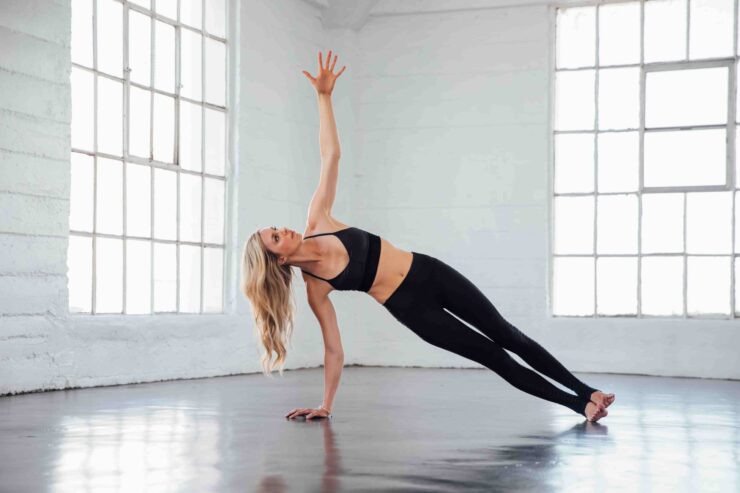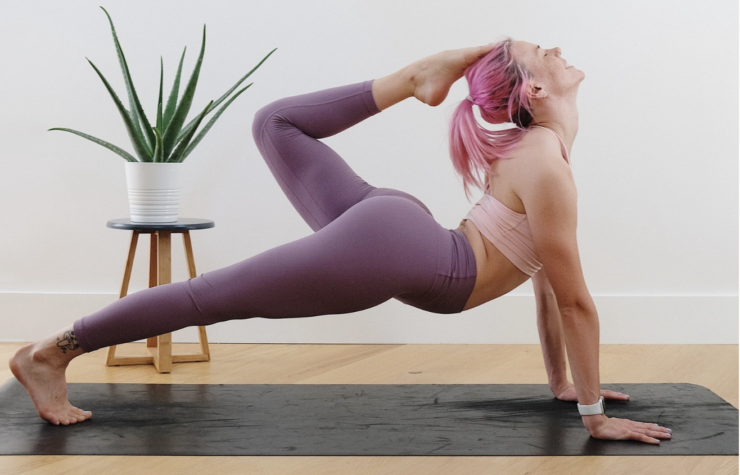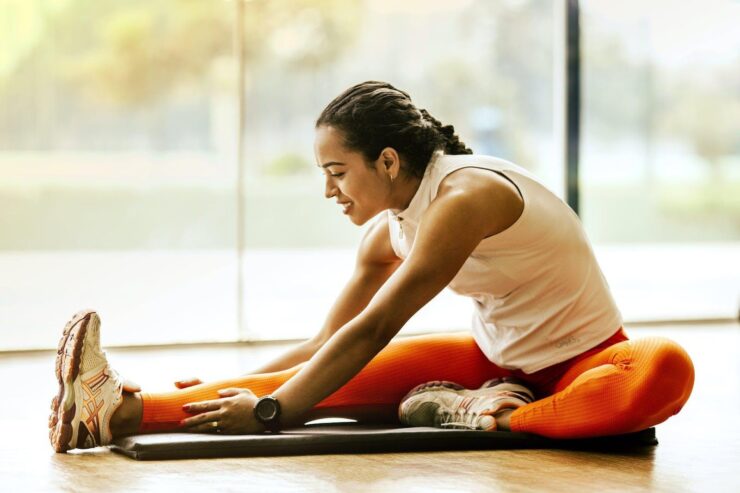Yoga is more than just a form of exercise; it’s a journey towards inner peace and physical well-being. As such, choosing the right outfit for your yoga practice is crucial, not just for comfort but for enhancing your overall experience.
This blog post delves into the essential tips for selecting the perfect yoga outfit, ensuring you’re well-prepared to embark on your spiritual journey with confidence and style.
Table of Contents
Understanding the Importance of Comfort

Comfort is paramount in yoga attire. Your focus should be on your practice, not adjusting your clothes. Comfortable clothing allows for a seamless flow through poses, facilitating a deeper connection with your body and breath. It’s not just about feeling good in what you wear but ensuring that your attire doesn’t distract you from your practice.
Opt for soft, stretchable fabrics that move with your body, enhancing your ability to perform various asanas without restriction. Remember, when you’re comfortable, your mind is free to focus on the present, deepening your practice.
Breathability and Moisture-Wicking Fabrics
Yoga can be an intense workout, leading to sweating and discomfort if you’re not wearing the right fabrics. Breathable and moisture-wicking materials are essential to keep you dry and comfortable throughout your session. These fabrics pull sweat away from your body, allowing it to evaporate quickly.
This feature is particularly beneficial in styles like Bikram or hot style, where the room temperature is elevated. Look for materials like microfiber, polyester, or bamboo, which are known for their breathability and moisture-wicking properties, ensuring you stay cool and focused.
Finding the Right Fit: Not Too Tight, Not Too Loose
The fit of your yoga clothing can significantly impact your practice. Clothing that’s too tight may restrict your movement and circulation, while too loose attire can interfere with poses and be distracting. The key is to find a balance. Your outfit should hug your body without squeezing it, offering flexibility and support where needed.
This balance ensures freedom of movement and comfort, allowing you to focus on your alignment and breath rather than your clothing. Always try on training wear before purchasing to ensure it offers the right fit for your body and practice needs. If you have the right fit, read more for the next step.
The Role of Supportive Undergarments

Supportive undergarments are the foundation of a good yoga outfit. For women, a well-fitting sports bra is crucial to provide support and comfort, especially in poses that involve bending or inverting. It should be snug but not restrictive, allowing for deep breaths and movement without discomfort.
Men might consider compression shorts or athletic briefs that offer support and keep everything in place. Choosing the right undergarments can make a significant difference in your comfort and confidence during practice.
Layering for Temperature Control
Layering is a strategic way to manage body temperature before, during, and after yoga practice. Start with a moisture-wicking base layer, add a breathable top, and finish with a lightweight, easy-to-remove layer like a wrap or sweatshirt.
This approach allows you to adjust your attire based on your body’s temperature and the room’s climate, ensuring you remain comfortable throughout your practice. Layers are particularly useful for outdoor sessions or cooler environments, where body temperature can fluctuate more significantly.
Avoiding Restrictive Clothing: Range of Motion Matters
In yoga, your body moves through a wide range of motions, making it essential to wear non-restrictive clothing. Tight belts, buttons, or seams can hinder your flexibility and even cause discomfort or injury. Opt for seamless, elastic fabrics that stretch with you, ensuring no pose is beyond reach.
This consideration not only enhances your practice but also prevents the risk of fabric cutting into your skin or restricting your circulation, allowing for a smoother, more enjoyable exercise experience.
Mindful Material Choices: Eco-Friendly Options

Yoga is about harmony with oneself and the environment, making eco-friendly clothing choices resonate with many practitioners. Sustainable materials like organic cotton, bamboo, and recycled polyester reduce environmental impact and often offer superior comfort and breathability.
By choosing eco-friendly wear, you’re not only making a choice that benefits your practice but also one that aligns with the principles of mindfulness and respect for nature that this activity teaches.
Considering Your Yoga Style: From Gentle to Power
Your yoga style should influence your clothing choices. Gentle practices like Yin or Hatha may allow for looser, more comfortable attire, while dynamic styles like Vinyasa or Ashtanga require more form-fitting, flexible garments that stay in place as you move.
Additionally, practices like Kundalini style, which includes specific breathwork, might benefit from lighter, more breathable fabrics. Understanding the demands of your chosen style can guide you in selecting the most appropriate and comfortable outfit.
Expressing Your Personal Style: Color and Patterns
Yoga clothing doesn’t have to be bland. Expressing your personal style through colors and patterns can enhance your mood and motivation.
Bright colors and vibrant patterns can energize your practice and reflect your personality. However, consider the setting and ensure your choices are not distracting to others in a group class.
Whether you prefer bold hues or subtle tones, your yoga attire is an opportunity to express yourself while respecting the practice and its environment.
Practicality Meets Style: Transitioning From Studio to Street

For many, yoga is a lifestyle, not just a practice. Choosing outfits that transition smoothly from the studio to streetwear can simplify your routine and reflect your holistic approach to yoga. Look for versatile pieces that blend functionality with style, such as leggings that pair well with tunics or dresses, or tops that can double as casual wear.
This approach not only offers convenience but also allows you to carry the essence of your yoga practice with you throughout the day.
Footwear Options: Barefoot or Yoga Shoes?
Traditionally, yoga is practiced barefoot to enhance stability and connection with the ground. However, in certain environments or for personal comfort, yoga shoes or socks with grip bottoms can be beneficial. These options provide traction and protect your feet without compromising your connection to the floor.
If you choose to wear yoga footwear, ensure it’s specifically designed for the practice, offering the right balance of grip, flexibility, and breathability.
Accessorizing Wisely: From Mats to Hairbands

Accessories can complement your yoga outfit and practice. A high-quality yoga mat is essential for comfort and support, while hairbands or clips can keep your hair out of your face, allowing you to focus on your practice. Consider also moisture-wicking towels, especially for hot yoga, and a durable, stylish bag to carry your gear.
Each accessory should enhance your practice, offering functionality without detracting from your focus or comfort.
In conclusion, choosing the right yoga outfit involves a blend of comfort, functionality, and personal style.
By considering the factors outlined above, you can select attire that enhances your practice, supports your body, and reflects your personal journey in yoga.
Remember, the perfect yoga outfit is one that allows you to move freely, breathe easily, and focus on your practice, helping you to achieve a deeper sense of peace and fulfillment.
Related Posts:
- What is the Most Comfortable Shoe to Wear All Day?…
- 1883 Cast: Tim McGraw Leads The Perfect Ensemble To…
- How to Negotiate with a Debt Collection Lawyer:…
- How Can I Find Out the History of a Car? Essential…
- What is Extra Virgin Olive Oil? Essential Facts and…
- Advantages of Choosing in Right Metal Bed Frame for…













